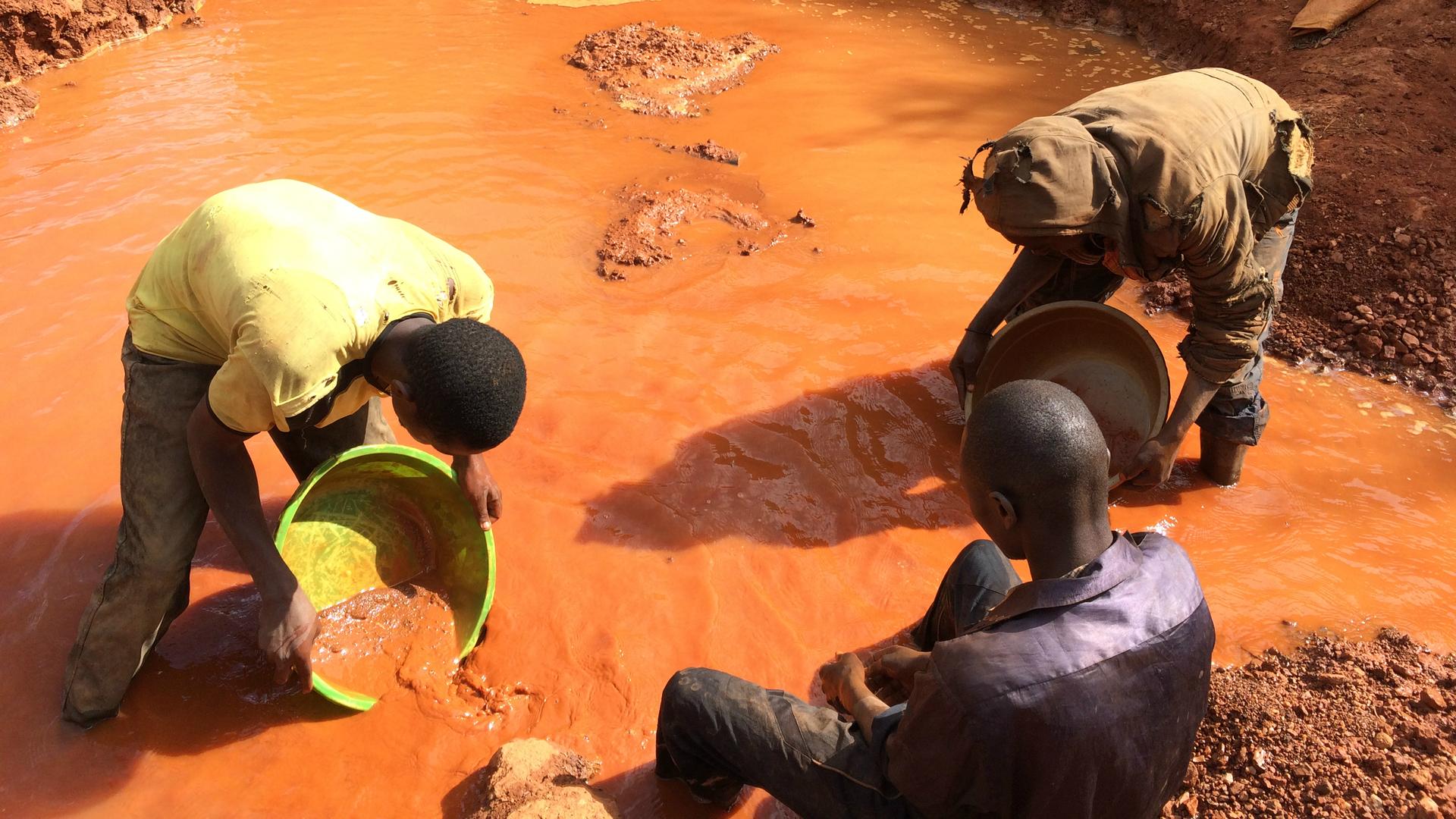Tracing conflict gold in the Democratic Republic of the Congo
Artisanal gold miners in the Democratic Republic of the Congo use their hands and crude tools to find and extract gold. They get paid only when they find the mineral. These miners are working at a pit in Ngweshe in South Kivu.
Early evening, on a Monday in March, a Congolese customs official stopped a woman casually attempting to pass through a small border crossing between the Democratic Republic of the Congo and neighboring Rwanda. Francine Nakulumba, it turns out, was carrying a parcel of gold that weighed nearly two-and-half pounds, which would fetch over $40,000 on the world market.
The scene was remarkable only in that the world’s most coveted precious metal — and its least controlled conflict mineral — had been detected. The DRC government estimates that 20 to 30 tons of gold are extracted by Congolese artisanal miners each year, but only about 650 pounds are officially exported. Experts estimate maybe up to 16 tons are actually being extracted, but agree with the official conclusion — nearly all of Congo’s artisanal gold is smuggled to neighboring countries for export to Dubai.
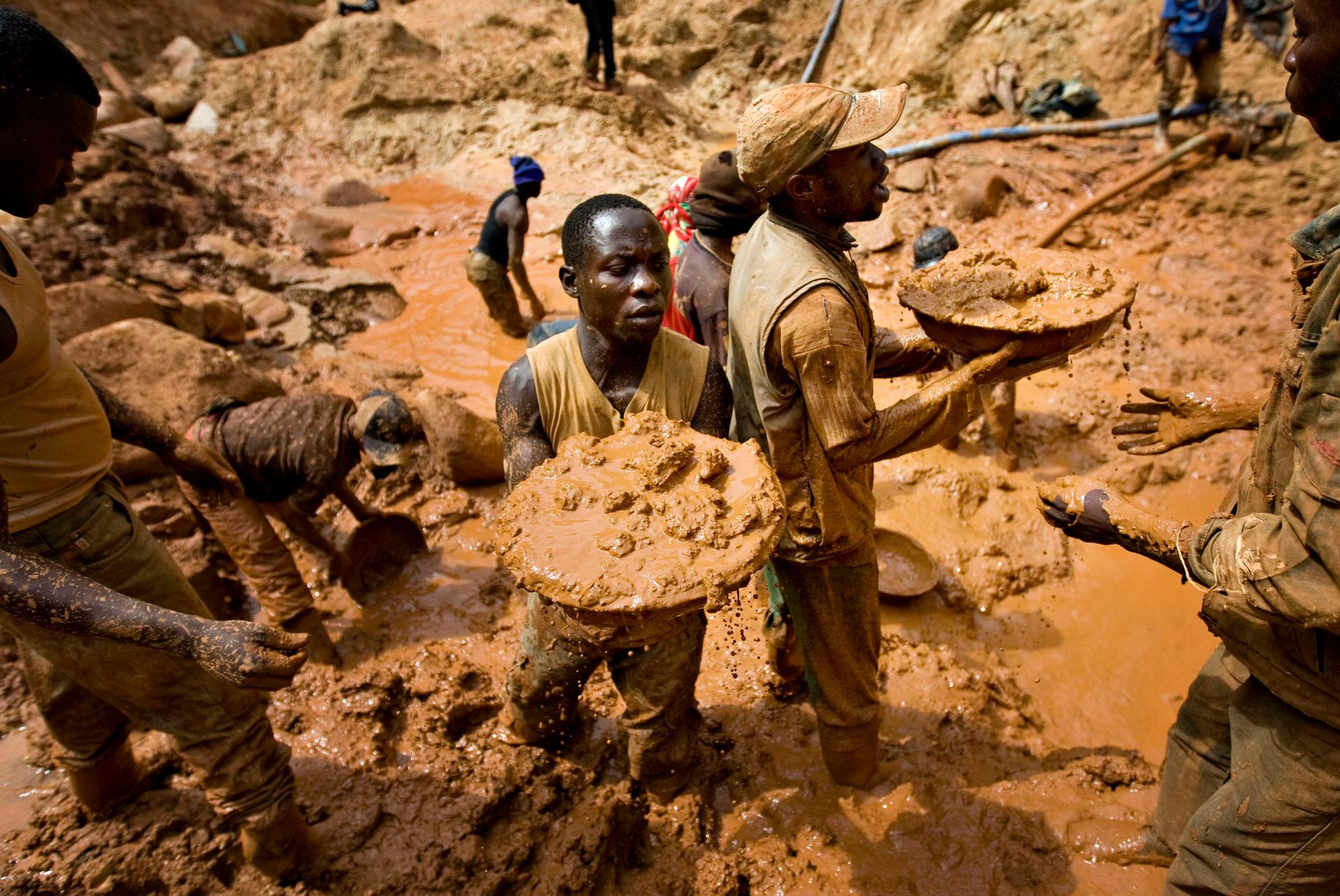
Far from its origin in Congo’s red, fertile soil, the gold may end up as jewelry or material in smart phones and high-tech medical devices. It may be melted into gold bars and stashed in the safety deposit box of an investor, or the vault of a central bank. And it may be used for illicit purposes, like moving a lot of money without using cash or the financial system.
Gold’s high worth and ease of movement is also exploited by local armed groups and criminal organizations. Experts found that more than half of Congo's artisanal miners work in pits where armed elements are present and, of course, benefiting.
Authorities eventually determined that Nakulumba’s gold was untraceable. They had no idea which mine it came from, who profited and how it ended up in the smuggler’s bag.
But this week, the DRC government launched a new program aimed at disrupting the illicit trade by tagging and tracing it from pit to market. Experts have their doubts about whether ITOA — the French acronym for Traceability Initiative for Artisanal Gold — will be successful, but it does mark the first official effort in the region to trace a notoriously untraceable mineral that’s fueling conflict.
'Not sold through formal channels'
Mine shafts dot a shaved green mountainside in Congo’s gold-rich province of South Kivu. The tunnels are propped up by tree trunks and plastic sheets — inside, the damp air fills the lungs and the darkness and silence overwhelm the senses. Last week it rained, and two men were killed when a cave collapsed in a mudslide.
Ngweshe is a small mining site, a bumpy two-hour drive up dusty mountain roads, away from the provincial capital of Bukavu. It’s both home and worksite for about 235 men, many of them migrants. About 200,000 diggers make a living in thousands of such artisanal mines, using hands and crude tools to extract gold.
Antoinet Chubaka Mufindi, 28, says he’s been working here for a year. He gets paid only when he finds gold and the quantity is typically so small that it’s weighed against a matchstick. On luckier days, he might find enough to match the weight of half a coin. But advocacy groups say he’s likely to go months without any luck, which can mean sinking into debt for food and other expenses.
A watchman is responsible for ensuring Mufindi doesn’t pocket any of the gold he finds. Any mineral extracted by the diggers belongs to the local cooperative, an ornamental entity required by law and controlled by a local politician. But the incentive for Mufindi to sell on the black market is high.
Pascal Buyoya, a buyer from Bukavu, may have to pay about $34 for a gram of gold if he buys from the cooperative, and he’ll expect to sell it to a bigger buyer at $37. After the pit boss, the coop and others take their cuts, a digger like Mufindi ends up with just a portion of that price. So if Buyoya can find a way to negotiate directly with someone like Mufindi, they’ll likely agree on a price that makes a slightly higher profit margin for the buyer and a bigger chunk of the gram’s market value for the digger.
“We’re both just working men, so we find a way to go around the boss and do our negotiations,” says Buyoya, who’s sporting a thick gold watch, chain, ring and bracelet. Still, he says, with illegal taxes collected along the supply chain, business isn’t as profitable as it once was.
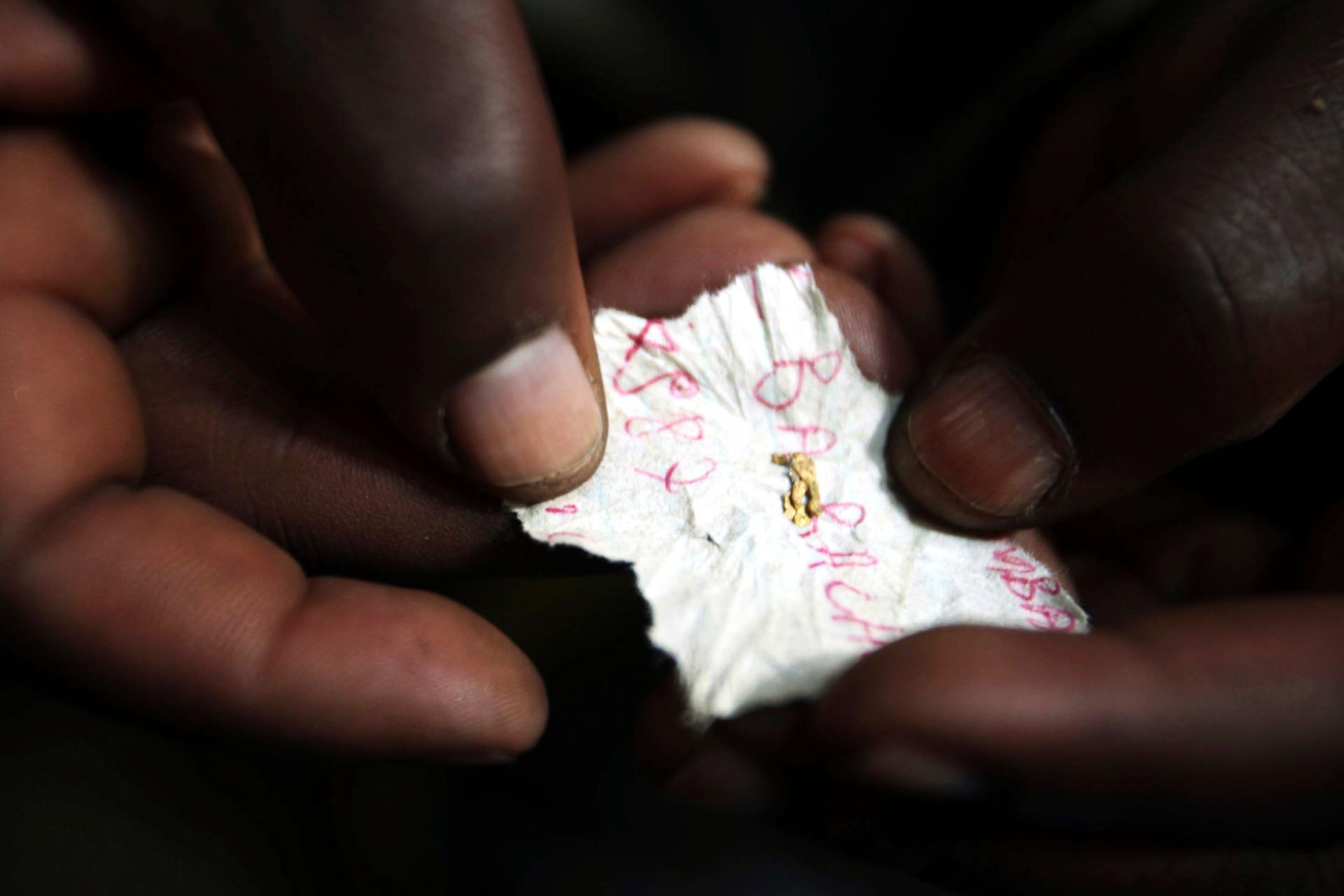
“There are barriers along routes transporting gold where normal traders have to pay multiple taxes,” says Maxie Muwonge, chief of the United Nations’ International Organization for Migration office in South Kivu. There are also “powerful elements” that can move the product across those barriers without taxation, he says. That creates another disincentive for transparency.
“Most areas controlled by armed groups in eastern Congo are gold hubs,” Muwonge says, citing 32 local armed groups in the region and up to five groups linked to neighboring countries. “Gold that comes from most of these areas is not sold through formal channels but through armed group networks.”
That includes Congo’s military.
“FARDC [the DRC army] elements seem to rely especially on illegal taxation to generate income from the mines,” concluded Belgian research institute IPIS, which visited 1,615 artisanal mines in DRC in 2015. “Non-state armed groups profit through various criminal activities, including illegal taxation and even pillaging.”
If he manages, Buyoya will sell the gold he collects from remote mines to a bigger buyer back in Bukavu who will likely ferry it out of the country. Or that buyer will sell it to an official purchasing house called a comptoir, which will declare only a small portion of its exports to avoid provincial and national taxes. Neither is likely to ask Buyoya about the mine where the gold was sourced, or check if it’s linked to armed groups.
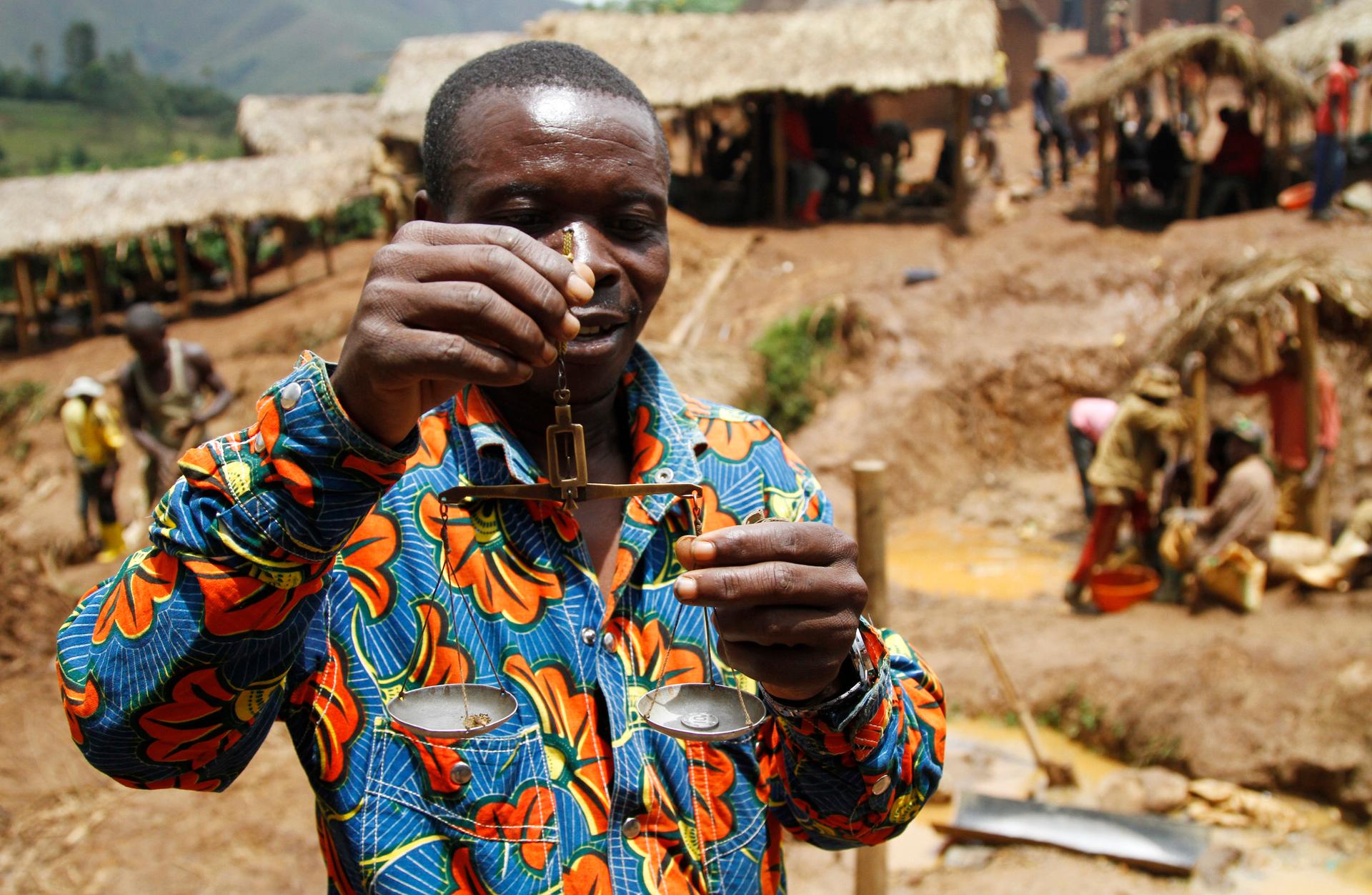
Conservative estimates say $300 million to $600 million worth of Congolese gold is smuggled out each year. There’s no way to track where it goes, but official export statistics from countries with significantly lower production capacity provide some indication. Over the past two years, Rwanda’s gold exports jumped 900 percent and Uganda’s nearly by 100,000 percent, according to data collected by the Enough Project, a Washington-based research and advocacy group. Neighboring Burundi and Tanzania appear to show the same pattern, Enough said in a recent report.
Cleaning Congo’s gold
“We have our minerals — there are a lot of them, but they are not endless,” says Daniel Ngoie Mbayo, director of the North Kivu office for Ministry of Mines’ certification agency, CEEC. “The government of Congo should be able to exchange these resources for basic infrastructure like roads, schools, hospitals and electricity.”
Mbayo says neighboring countries help create conditions where smuggling thrives, and it’s draining Congo’s unparalleled natural wealth. It’s also depriving the government of millions in tax revenue and royalties.
But international buyers say they aren’t keen on getting potential conflict gold from Congo, so they buy from neighboring countries, knowing the gold is likely Congolese. To create a legal, conflict-free gold trade that would be attractive to buyers, government and industry will need to clean up the supply chain.
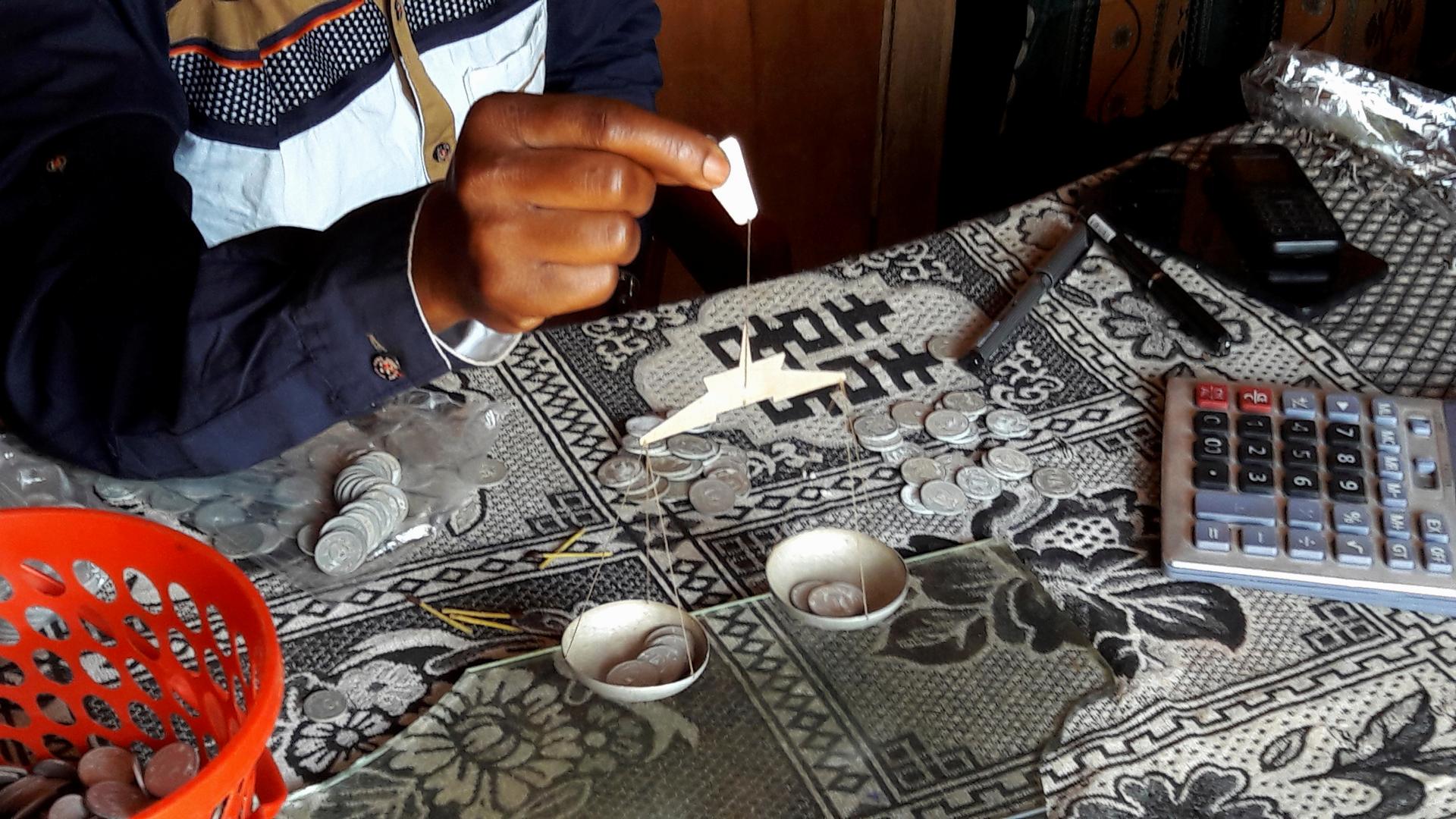
It happened since 2010 with the “3Ts” — tin, tantalum and tungsten, which are used in high-tech devices and electronics. Thanks to a slew of international regulations and consumer pressure that ushered in industry due diligence, these minerals have been largely de-conflicted. But the challenge is much bigger with gold.
American, Canadian and German governments have all funded various initiatives in the past few years, aimed at introducing due diligence into the artisanal gold mining sector.
With some of those pilot projects still in progress, the Congolese government settled on ITOA, a technical approach backed by USAID that requires miners to place gold into tamper-proof smart bags that include a bar code and vary in color, size and price depending on their place in the supply chain. Organs within the Ministry of Mines will oversee and enforce the process, but it’s the actors along the supply chain that would need to comply with the rules, and at their own expense.
Experts say if the program is to succeed, it absolutely must address economic incentives for people in the pit, like Mufindi. In other words, get diggers — who can divert the gold out of the legal market by selling to an illegal buyer — to sell to the designated agent.
“What miners really want are better prices and transparency,” says Joanne Lebert, executive director for Partnership Africa Canada. PAC just completed a two-year pilot project, Just Gold, which offered technical assistance to help diggers increase their yield. Lebert quickly found that diggers wanted a different kind of help: the knowledge and tools to participate in the gold market. Equipping traders with access to real-time data provided miners with information about international gram prices and costs at various points in the supply chain. Digital scales replaced matchsticks and gold coins, ensuring diggers they weren’t being cheated. This model would empower miners, but it could put middlemen like Buyoya out of business.
Moreover, to ensure the gold is conflict-free by international standards, it would need to come from a pit that’s been validated as having no armed presence. As of April 2016, only one gold mine in South Kivu was declared “green,” and it wasn’t Ngweshe.
“Right now the only model controlling the market is the illegal one,” says Shawn Blore, a DRC expert who authored a report on the artisanal gold sector for USAID. “It’s important to create a competitive model … a legal and functioning one.”
But Blore and others warn a model with the wrong economic incentives — like added costs for smart envelopes — combined with a lack of credible enforcement could actually reinforce the illicit market.
'Ready to punish'
Col. Irene Siyafahamu sits in a bare office building between a cemetery and a slum, far from other government offices in Goma, the capital of North Kivu province. She’s in charge of mining police, an agency created in 2014 and charged with enforcing mining regulations and investigating mineral-related crimes. But, she says, she hasn’t even been issued a car, which would allow her to leave the office to pursue tips.
The government needs to get serious if it’s going to put an end to smuggling, Siyafahamu says, citing several smuggling cases where government and military officials weren’t held accountable.
“We need to stop this idea of impunity. Justice must be strong and ready to punish,” she concludes.
Nakulumba, the woman trying to cross into Rwanda with two-and-a-half pounds of gold, was less than a quarter-mile from the border with arresting officials when the convoy was intercepted by a Congolese army colonel, Jeremie Kirongozi. He confiscated the gold and left the scene with Nakulumba, according to a government document. The gold and the smuggler were recovered only with the intervention of Kirongozi's superior. He’s yet to be arrested.
Kira Zalan reported from Goma and South Kivu in DRC as an International Women's Media Foundation African Great Lakes Reporting fellow.
